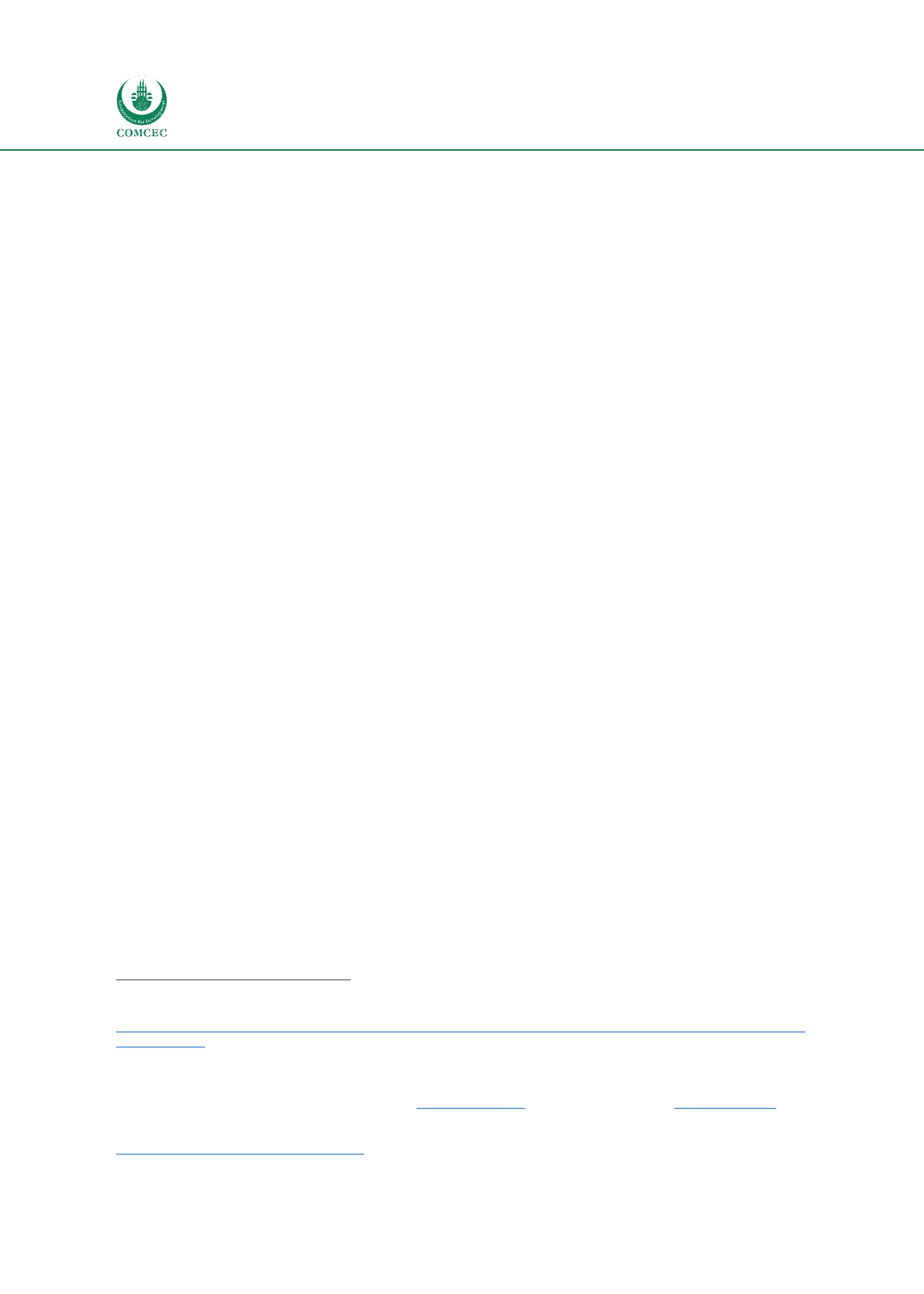

Improving Agricultural Market Performance
:
Creation and Development of Market Institutions
154
Distribution and Market
The distribution of agricultural products is relatively well-organized given South Africa’s
modern and well-developed transport infrastructure, especially the country’s roads and rail-
roads. This is particularly the case when compared to other African countries. The Government
recognizes the need for further improvement to meet growing demand and is investing
considerably. Nevertheless, continuous investment is required to enable smallholders to
service the commercial market as rural areas still remain poorly positioned due to inadequate
and under-maintained transport infrastructure. Smallholders need to be connected to the
country’s eight commercial ports, which together form the primarily channel of trade between
other African countries, the Americas, Europe and Asia, accounting for approximately 96% of
South Africa’s exported commodities.
486
With regards to commodity exchanges, South Africa is one of the few countries in Africa which
tried to implement agricultural commodity exchanges. In fact, South Africa has managed to set
up a comparatively well-functioning and sustainable exchange market, as opposed to most
other countries, which actually failed in developing such commodity markets.
487
Consumption and Trade
South Africa is a net exporter of agriculture and food products and, hence, an important source
of foreign exchange earnings.
488
Agriculture and food figure prominently in South Africa’s
exports, reaching US$8.7 billion, or 11.5% of total exports, in 2016. This figure includes live
animals, primary agricultural produce, food and beverage preparations, edible fats and oils,
plants and cut flowers, animal fodder, tobacco, and hides, skins, and leather.
489
Policy & Regulatory Framework
South Africa has one of the more liberal agricultural policy regimes in the world. Starting in the
1990s, the Government of South Africa began to reduce its financial support to agriculture
during the 1990s, and fell from over 15% in 1995 to less than 5% of gross farm receipts, and
has remained at that level since 2010.
490
This compares to a current level of support of around
18% for OECD Member Countries in aggregate, which nevertheless represent a significant
decline from more than 30% in the mid-1990s. The policy reforms of the 1990s included
deregulation of the market of agricultural products, liberalization of domestic markets, and
reduced barriers to agricultural trade.
486
KPMG (2012), Small Enterprise Development Agency: Research on the Performance of the Agricultural Sector, available
at
http://www.seda.org.za/Publications/Publications/Research%20on%20the%20Performance%20of%20the%20Agricultur e%20Sector.pdf[Accessed July 2017].
487
Antonaci, L., Demeke, M., & Vezzani, A.(2014), “The challenges of managing agricultural price and production risks in sub-
Saharan Africa,”
ESA Working Paper
, No. 14-09, pp. 10-15.
488
WTO (2015),
Trade Policy Review: Southern Africa Customs Union
, Geneva: World Trade Organization.
489
ITC Trade Map (2017), ITC Trade Map, available a
t www.trademap.organd Market Access Map
– www.macmap.org[Accessed May 2017].
490
OECD (2016), Producer and Consumer Support Estimates, OECD Agriculture Statistics (database), available at
http://dx.doi.org/10.1787/agr-pcse-data-en [Accessed May 2017].


















